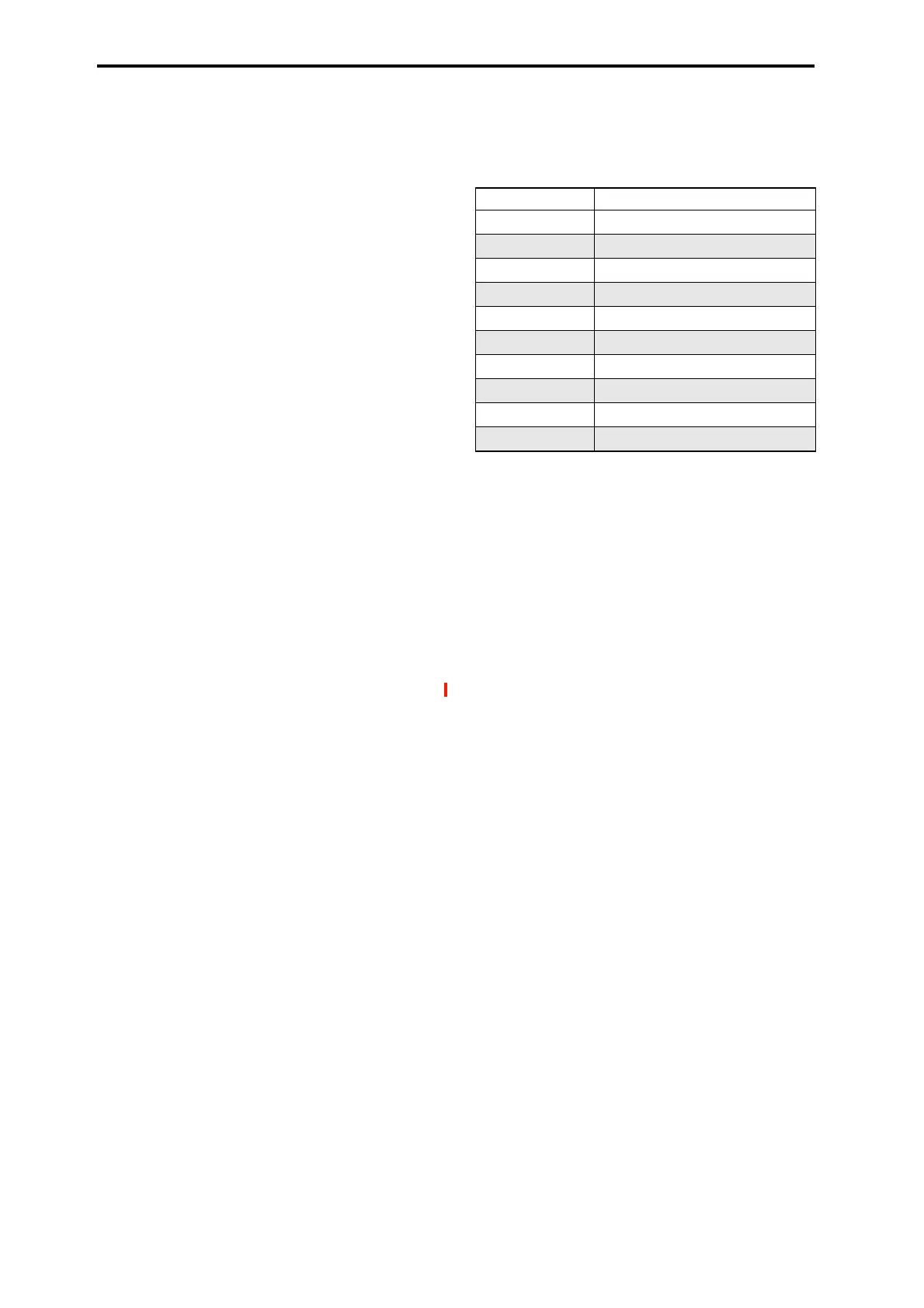EXi: MOD-7 Waveshaping VPM Synthesizer
332
The four ramp values control the rate of change between
each pair of keys. For instance, if the Low-Center Ramp is
set to 0, the value will stay the same between the Low Break
key and the Center key.
You can think of the resulting shape as being like two
folding doors attached to a hinge in the center. At the Center
key (the main hinge), the keyboard tracking has no effect.
The two folding doors swing out from this center point to
create changes in the higher and lower ranges of the
keyboard.
Key
Low Break [C–1…G9]
This sets the breakpoint note between the two lower ramps–
the “hinge” of the lower door.
Center [C–1…G9]
This sets the center of the keyboard tracking–the main
“hinge.” At this key, the keyboard tracking has no effect on
the volume, or on any AMS destinations.
High Break [C–1…G9]
This sets the breakpoint note between the two higher ramps–
the “hinge” of the upper door.
Entering notes from the keyboard
You can enter note numbers directly by playing them on the
keyboard. To do so:
1. Select one of the Key parameters.
2. Hold down the ENTER key.
3. While holding ENTER, play a note on the keyboard.
Ramp
Positive ramp values mean that the keyboard tracking output
increases as you play farther from the Center key; negative
ramp values mean that it decreases.
Because of this, the meanings of positive and negative ramp
settings will change depending on whether the ramp is to the
left or right of the Center key.
Also note that, as shown in the graphic “Amp Keyboard
Tracking,” below, negative slopes are more steep than
positive slopes.
Bottom-Low and Low-Center: negative ramps make the
keyboard tracking’s output go down as you play lower on the
keyboard, and positive ramps make the output go higher.
Center-High and High-Top: negative ramps make the
keyboard tracking’s output go down as you play higher on
the keyboard, and positive ramps make the output go up.
Bottom-Low [–Inf, –99…+99, +Inf]
This sets the slope between the bottom of the MIDI note
range and the Low Break key. For normal key track, use
negative values.
Low-Center [–Inf, –99…+99, +Inf]
This sets the slope between the Low Break and Center
keys. For normal key track, use negative values.
Center-High [–Inf, –99…+99, +Inf]
This sets the slope between the Center and High Break
keys. For normal key track, use positive values.
High-Top [–Inf, –99…+99, +Inf]
This sets the slope between the High Break key and the top
of the MIDI note range. For normal key track, use positive
values.
+Inf and –Inf ramps
+Inf and –Inf are special settings which create abrupt
changes for split-like effects. When a ramp is set to +Inf or –
Inf, the keyboard tracking will go to its extreme highest or
lowest value over the span of a single key.
When a ramp is set to +Inf, the keyboard tracking will go to
its highest value (double the programmed volume) over a
single half-step.
Similarly, when a ramp is set to –Inf, the keyboard tracking
will go to its lowest value (complete silence) over a single
half-step.
Note: If you set the Center-High ramp to +Inf or –Inf, the
High-Top parameter will be grayed out. Similarly, if you set
the Low-Center ramp to +Inf or –Inf, the Bottom-Low
ramp will be grayed out.
Keyboard Track Parameter Details
The Keyboard Track graphic appears in the Parameter
Details area when any of the Keyboard Track parameters are
selected.
Ramp Change in level
-Inf Silent in one half-step
–99 Silent in one whole-step
–95 Silent in one octave
–48 Silent in two octaves
–25 Silent in four octaves
00 no change
+25 x2 in four octaves
+50 x2 in two octaves
+99 x2 in one octave
+Inf x2 in one half-step

